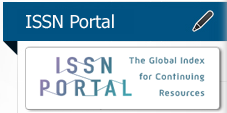FAKTOR YANG BERHUBUNGAN DENGAN PENERIMAAN POST-PLACENTA INTRA UTERINE CONTRACEPTIVE DEVICE (PPIUCD): META-ANALISIS
Abstract
Keywords
Full Text:
PDF (Bahasa Indonesia)References
Aemro, E., Abdo, M., Deksisa, A., Alemayehu, A., Mulatu, T., Ahmed Hassen, T., Molla, A., & Teji Roba, K. (2022). Immediate postpartum intra-uterine contraceptive device utilization and associated factors among women who gave birth in public health facilities of Adama town, Ethiopia. SAGE Open Medicine, 10. https://doi.org/10.1177/-20503121221142412
Askew, I., Weinberger, M., Dasgupta, A., Darroch, J., Smith, E., Stover, J., & Yahner, M. (2017). Harmonizing methods for estimating the impact of contraceptive use on unintended pregnancy, abortion, and maternal health. Global Health Science and Practice, 5(4), 658–667. https://doi.org/10.9745/GHSP-D-17-00121
Assefaw, M., Azanew, G., Engida, A., Tefera, Z., & Gashaw, W. (2021). Determinants of Postpartum Intrauterine Contraceptive Device Uptake among Women Delivering in Public Hospitals of South Gondar Zone, Northwest Ethiopia, 2019: An Unmatched Case-Control Study. Obstetrics and Gynecology International, 2021. https://doi.org/10.1155/2021/1757401
Coherence, P., To, I., The, A., & Goals, S. D. (2017). The Integrated Sustainable Development Goals ( iSDG ) model is a policy simulation tool designed to help policymakers and other stakeholders make sense of the complex web of interconnections between the SDGs . Unlike databases and indexes that provide a. 23–25.
Demissie, D. B. (2021). Immediate Post-partum Modern Family Planning Utilization and Associated factors among women gave birth in public Health facilities, Addis Ababa, Ethiopia. Research Square, 1–20.
Deneke, Y. S., Jisso, M., Fantahun, S., Eshetu, B., Assefa, A. A., & Gebretsadik, A. (2023). Acceptance, utilization, and factors associated with immediate post¬partum intrauterine contraceptive device among mothers delivered at public health facilities in Hawassa city, Ethiopia: Institution-based study. Reproductive Health, 20(1). https://doi.org/10.1186/s12978-023-01586-z
Egger, M., Smith, G. D., Schneider, M., & Minder, C. (1997). Bias in meta-analysis detected by a simple, graphical test. British Medical Journal, 315(7109), 629–634. https://doi.org/10.1136/bmj.-315.7109.629
Fransiska, P., Saputri, D., & Nurbaiti, S. (2023). Faktor-Faktor Penggunaan Alat Kontrasepsi Intra Uterine Device (IUD). Cendekia Medika : Jurnal STIKES Al-Ma’arif Baturaja, 8(2), 284–291.
Gallagher, M. C., Morris, C. N., Fatima, A., Daniel, R. W., Shire, A. H., & Sangwa, B. M. M. (2021). Immediate Postpartum Long-Acting Reversible Contraception: A Comparison Across Six Humanitarian Country Contexts. Frontiers in Global Women’s Health, 2(April), 1–12. https://doi.org/10.3389/fgwh.2021.613338
Gebremedhin, M., Alemayehu, A., Yihune, M., Dessu, S., Melis, T., & Nurahmed, N. (2021). Acceptability and Factors Associated with Immediate Postpartum Intrauterine Contraceptive Device Use Among Women Who Gave Birth at Government Hospitals of Gamo Zone, Southern Ethiopia, 2019. Open Access Journal of Contraception, Volume 12, 93–101. https://doi.org/10.2147/oajc.s291749
Guye, A. H., Kanea, E. B., Nigussie, T., Girma, D., & Shambi, D. B. (2023). Utilization of immediate postpartum intrauterine device and its associated factors among women who gave birth in public hospitals in West Wollega Zone, Oromia, Ethiopia. Frontiers in Medicine, 10(November), 1–14. https://doi.org/10.-3389/fmed.2023.1238496
Jemal Mohammed, S., Gebretsadik, W., Endashaw, G., Shigaz Shimbre, M., Assfa Mossa, K., Nuriye Metebo, K., & Mesfin Yesgat, Y. (2020). Determinants of Postpartum IUCD Utilization Among Mothers Who Gave Birth in Gamo Zone Public Health Facilities, Southern Ethiopia: a Case-Control Study. Open Access Journal of Contraception, Volume 11, 125–133. https://doi.org/10.2147/oajc.s257762
Kanakuze, C. A., Kaye, D. K., Musabirema, P., Nkubito, P., & Mbalinda, S. N. (2020). Factors associated with the uptake of immediate postpartum intrauterine contraceptive devices (PPIUCD) in Rwanda: a mixed methods study. BMC Pregnancy and Childbirth, 20(1), 1–11. https://doi.org/10.1186/s12884-020-03337-5
Kassa, B. G., Ayele, A. D., Belay, H. G., Tefera, A. G., Tiruneh, G. A., Ayenew, N. T., Mihiretie, G. N., Tenaw, L. A., Semahegn, A. M., & Worku, M. D. (2021). Postpartum intrauterine contra-ceptive device use and its associated factors in Ethiopia: systematic review and meta-analysis. Reproductive Health, 18(1), 1–12. https://doi.org/10.1186/-s12978-021-01273-x
Khanifah, M., Suparni, & Zuhana, N. (2011). Analisis Deskriptif Determinan Dalam Pemilihan Metode Kontrasepsi Jangka Panjang Reversible pada Kegiatan Safari KB. Jurnal Komunikasi Kesehatan, 4(3), 410–419.
Makins, A., Taghinejadi, N., Sethi, M., Machiyama, K., Thapa, K., Perera, G., Munganyizi, P. S., Bhardwaj, A., & Arulkumaran, S. (2018). Factors influ-encing the likelihood of acceptance of postpartum intrauterine devices across four countries: India, Nepal, Sri Lanka, and Tanzania. International Journal of Gynecology and Obstetrics, 143, 13–19. https://doi.org/10.1002/ijgo.12599
Mishra, S. (2014). Evaluation of Safety, Efficacy, and Expulsion of Post-Placental and Intra-Cesarean Insertion of Intra¬uterine Contraceptive Devices (PPIUCD). Journal of Obstetrics and Gynecology of India, 64(5), 337–343. https://doi.org/10.1007/s13224-014-0550-3
Moher, D., Liberati, A., Tetzlaff, J., & Altman, D. G. (2009). Preferred reporting items for systematic reviews and meta-ana¬lyses: the PRISMA statement. Journal of Clinical Epidemiology, 62(10), 1006–1012. https://doi.org/10.1016/j.jclinepi-.2009.06.005
Permatasari, D. (2016). Perbedaan Tingkat Kecemasan Akseptor Kontrasepsi Iud Dengan Suntik 3 Bulan Dalam Meng-hadapi Efek Samping Alat Kontrasepsi. Hospital Majapahit, 8(1), 21–33. https://doi.org/10.5281/zenodo.3497602
Rinaldi, D. Y. (2014). Advokasi Bapemas dan KB Pada Pasangan Suami Istri pra-Kehamilan di Surabaya Dwi Yudha Rinaldi Pambudi Handoyo Abstrak. Paradigma, 02, 02.
Rochmawati, D. N., Meilani, N., & Triutomo, A. N. (2023). Knowledge and perception with intention in the selection of post¬partum intrauterine contraceptive device in third trimester pregnant women. Jurnal Kesehatan Ibu Dan Anak, 16(2), 118–126. https://doi.org/10.29238/kia.v16i2.1412
Sariyati, S., & Fatimah. (2019). Analysis of Factors Related to the Use of Post-Placenta IUDs for Women Giving Birth in Yogyakarta. Indonesian Journal of Nursing and Midwifery, 7(1), 1–5.
Sedgwick, P. (2013). Meta-analyses: how to read a funnel plot. BMJ, 346(7898). https://doi.org/10.1136/BMJ.F1342
Shiferaw, Y., Jisso, M., Fantahun, S., Eshetu, B., Assefa, A. A., & Gebretsadik, A. (2023). Acceptance, utilization, and fac¬tors associated with immediate post-partum intrauterine contraceptive device among mothers delivered at public health facilities in Hawassa city, Ethiopia: Institution-based study. Reproductive Health, 20(1), 1–11. https://doi.org/10.1186/s12978-023-01586-z
Singal, S., Sikdar, S. K., Kaushik, S., Singh, P., Bhatt, N., Samandari, G., Pal, M., Cagatay, L., Arya, A., & O’Connell, K. A. (2022). Understanding factors asso-ciated with continuation of intrauterine device use in Gujarat and Rajasthan, India: a cross-sectional household study. Sexual and Reproductive Health Matters, 29(2), 1–16. https://doi.org/10.1080/-26410397.2021.1933815
Trinata, D., & Nadapdap, T. P. (2019). Analisis Implementasi Strategi Promosi Kesehatan Dalam Pencegahan Filariasis Di Wilayah Kerja Puskesmas Tanjung Sengkuang Kecamatan Batu Ampar Kota Batam Tahun 2019. Jurnal Mutiara Kesehatan Masyarakat, 4(2), 61–71.
Usso, A. A., Adem, H. A., Dessie, Y., & Tura, A. K. (2021). Utilization of Immediate Postpartum Long Acting Reversible Contraceptives among Women Who Gave Birth in Public Health Facilities in Eastern Ethiopia: A Cross-Sectional Study. International Journal of Reproductive Medicine, 2021(Lmic), 1–8. https://doi.org/10.1155/2021/1307305
Wudineh, K. G., Desalegn, S., Ewunetu, M., & Shiferaw, S. (2023). Utilization of immediate post-partum long acting reversible contraceptives and its asso-ciated factors among mothers who gave birth in Addis Ababa public hospitals, Ethiopia: An institutional based cross-sectional study. PLoS ONE, 18(8 August), 1–11. https://doi.org/10.1371/-journal.pone.0280167
Zeng, X., Zang, Y., Kwong, J. S., Zhang, C., Li, S., Sun, F., Niu, Y., & Du, L. (2015). The methodological quality assessment tools for preclinical and clinical studies, systematic review and meta-analysis, and clinical practice guideline: a systematic review. J Evid Based Med, 8(1), 2–10.
DOI: https://doi.org/10.26751/ijb.v7i1.2395
Refbacks
- There are currently no refbacks.
Indonesia Jurnal Kebidanan indexed by
Published by LPPM Universitas Muhammadiyah Kudus
Jl. Ganesha Raya No.I, Purwosari, Kec. Kota Kudus, Kabupaten Kudus, Jawa Tengah 59316
This work is licensed under a Creative Commons Attribution-ShareAlike 4.0 International License.








